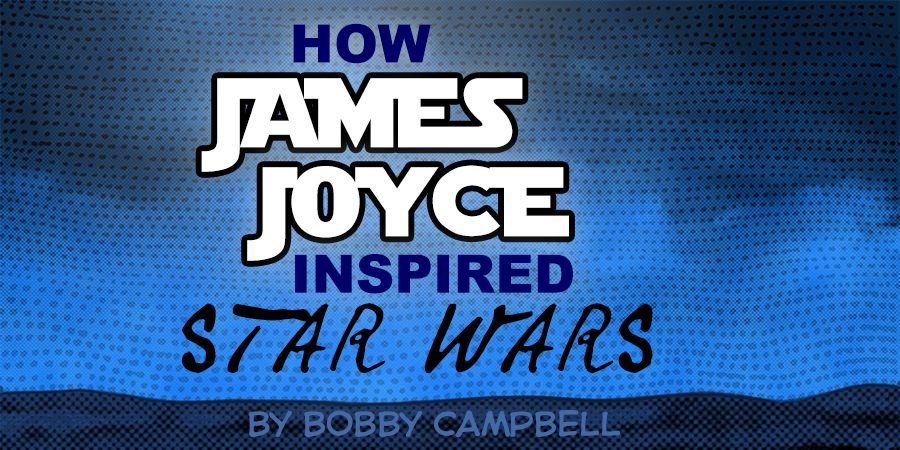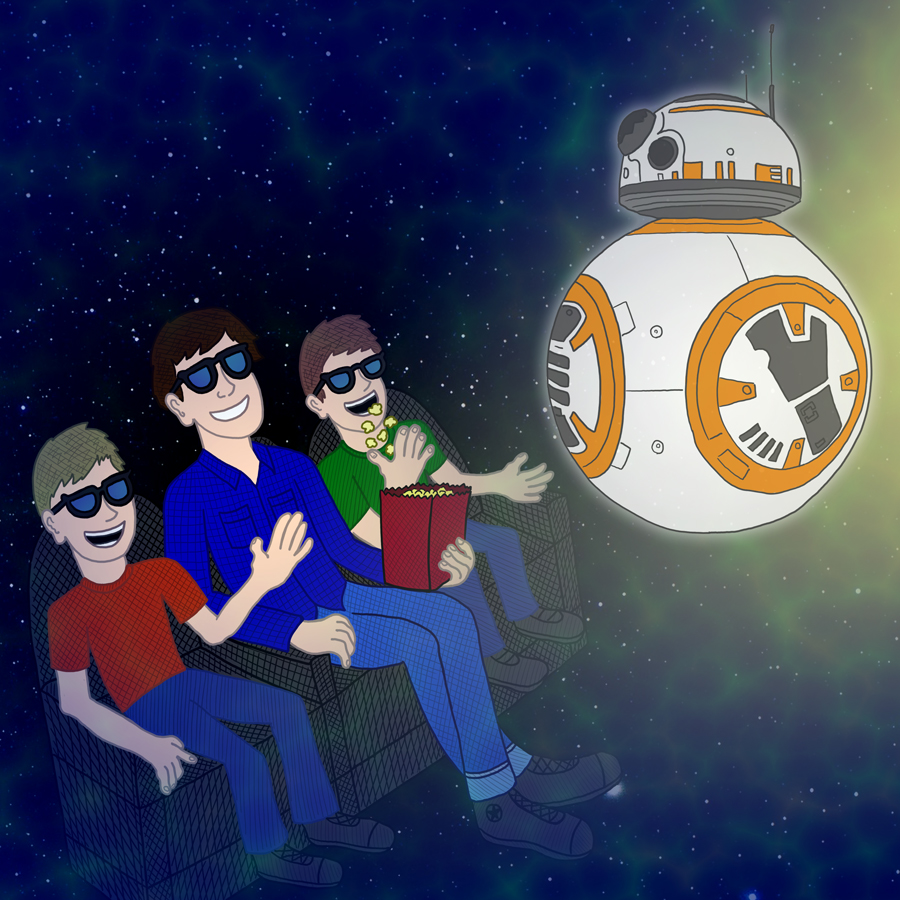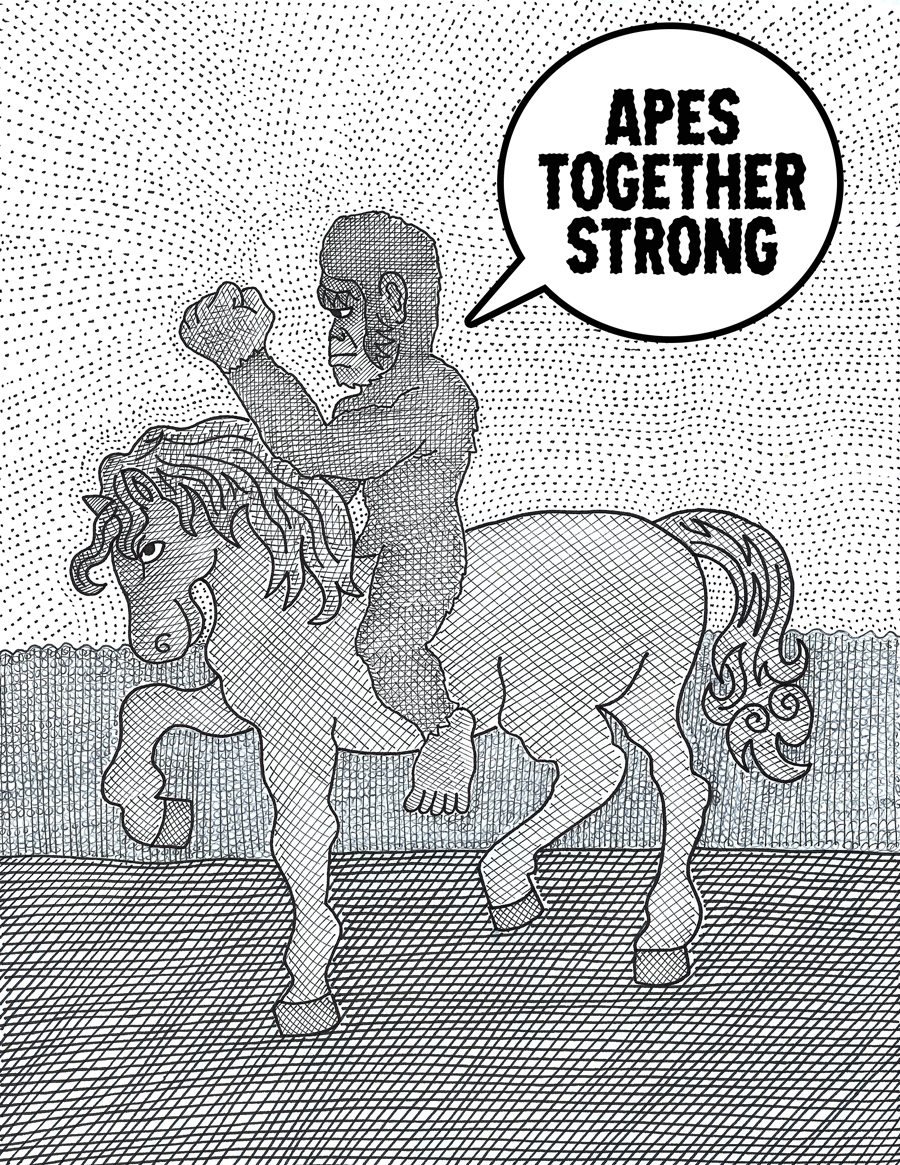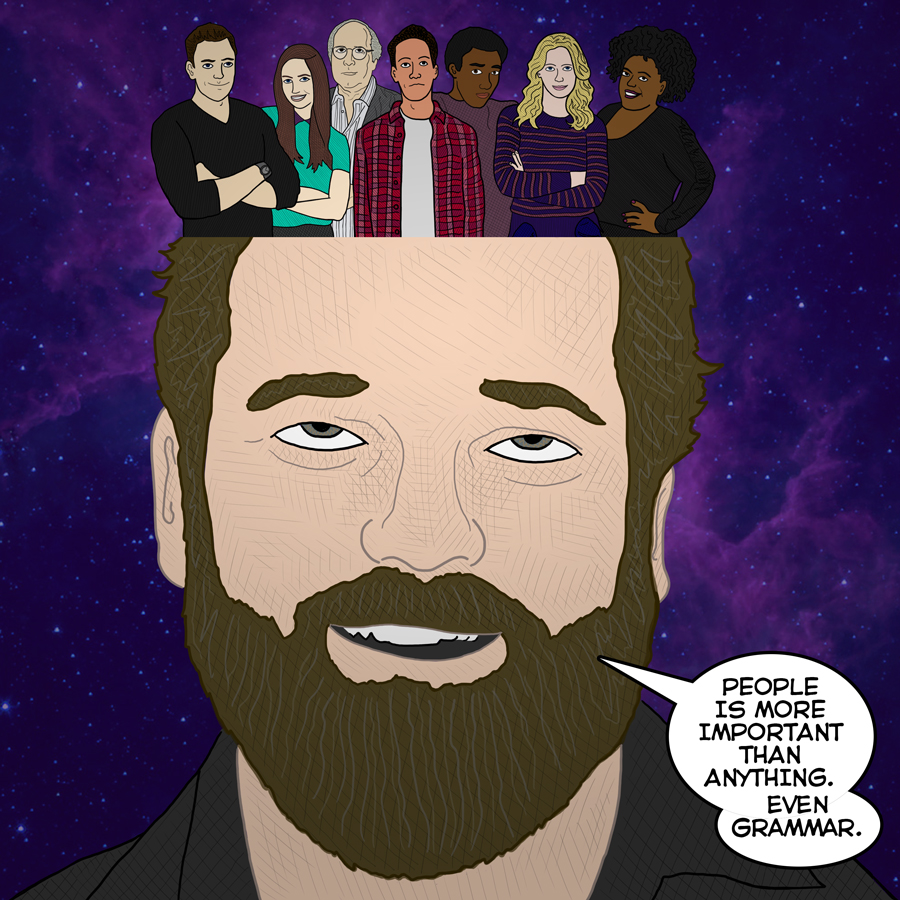
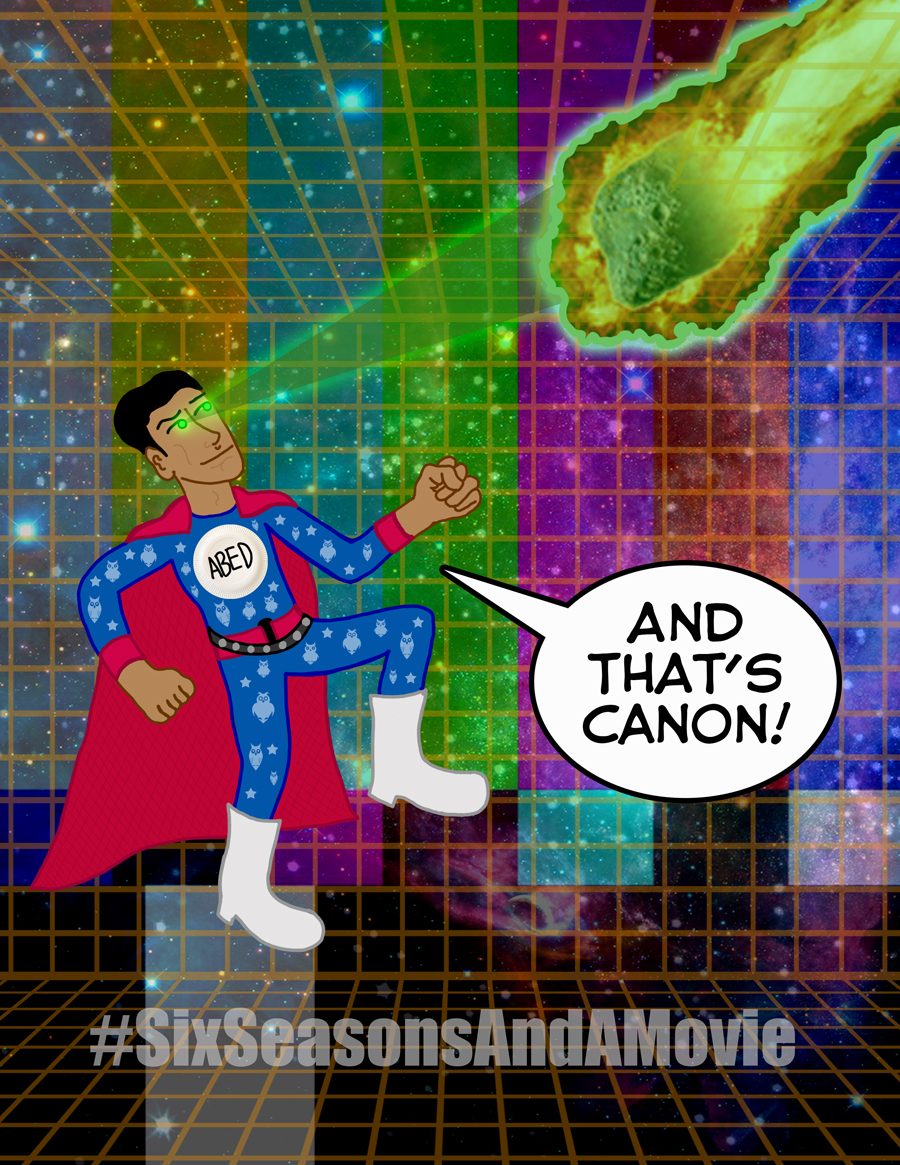 This is a model of the Dan Harmon created sitcom Community based on The Eight-Circuit Model of Consciousness, a metaphysiological construct developed by Timothy Leary and Robert Anton Wilson.
This is a model of the Dan Harmon created sitcom Community based on The Eight-Circuit Model of Consciousness, a metaphysiological construct developed by Timothy Leary and Robert Anton Wilson.
It is most certainly an imperfect mapping of the show, based on an imperfect psychological model, which cherry picks certain characteristics, and ignores others, but I found that it ends up fitting far better than I expected it to, and since the show is known for its impeccable story structure, it’s interesting to find something resembling character structure as well. For the sake of simplicity this is based on the original “Greendale Seven Study Group” incarnation of the cast.
1C. Shirley Bennett – The Oral Bio-Survival Circuit
 This circuit is concerned with nourishment, physical safety, comfort and survival. This circuit is imprinted early in infancy. The imprint will normally last for life, unless it is re-imprinted by a powerful experience.
This circuit is concerned with nourishment, physical safety, comfort and survival. This circuit is imprinted early in infancy. The imprint will normally last for life, unless it is re-imprinted by a powerful experience.
Shirley is a nurturing, morally simplistic, mother figure. She is concerned with what is “nice.” This circuit is considered the equivalent of Freud’s oral stage of development, and Shirley can be seen adhering to this role when she finds herself compulsively baking treats for the group to snack on. Her primary motivations are her three kids and her sandwich shop, both of which represent the obligations of the Oral Biosurvival role.
2C. Troy Barnes – The Emotional–Territorial Circuit
 The emotional-territorial circuit is imprinted in the toddler stage. It is concerned with domination and submission, territoriality etc.
The emotional-territorial circuit is imprinted in the toddler stage. It is concerned with domination and submission, territoriality etc.
Troy is a childlike, emotional, ex high school prom king, whose character arc travels a trajectory from social domination to losing himself in deference to his relationship with Abed. He also frequently has territorial struggles with Jeff, the de facto leader of the group. This circuit is considered the equivalent of Freud’s anal stage of development, and Troy does indeed proclaim a fondness for “butt stuff.”
3C. Annie Edison – The Symbolic or Neurosemantic–Dexterity Circuit
 This circuit is imprinted by human symbol systems. It is concerned with language, handling the environment, invention, calculation, prediction, building a mental “map” of the universe, physical dexterity, etc.
This circuit is imprinted by human symbol systems. It is concerned with language, handling the environment, invention, calculation, prediction, building a mental “map” of the universe, physical dexterity, etc.
Annie is an exceptionally organized, intelligent, and responsible overachiever, who emerges as the most efficacious member of the group. This circuit is activated by stimulant drugs, such as caffeine and amphetamines, and so Little Annie Adderall’s pill addiction makes perfect sense in this context. Her efforts in the debate team, Model UN, the Save Greendale Committee, and her aspirations to become an FBI agent all speak to her desire to achieve agency via language and dexterity.
4C. Jeff Winger – The Domestic or Socio-Sexual Circuit
 This fourth circuit is imprinted by the first orgasm-mating experiences and tribal “morals”. It is concerned with sexual pleasure (instead of sexual reproduction), local definitions of “moral” and “immoral”, reproduction, rearing of the young, etc. The fourth circuit concerns itself with cultural values and operating within social networks.
This fourth circuit is imprinted by the first orgasm-mating experiences and tribal “morals”. It is concerned with sexual pleasure (instead of sexual reproduction), local definitions of “moral” and “immoral”, reproduction, rearing of the young, etc. The fourth circuit concerns itself with cultural values and operating within social networks.
Jeff is a morally relative father figure to the group, which he formed accidentally after a failed subterfuge to try to get into Britta’s pants. Jeff is both a source of inspiration and mitigation for the group, which in either case is an exorcising of social control. He shows them the “right truth.” Jeff is an expert at manipulating cultural relativism in order to create his preferred socio-political environment. Jeff enjoys the power of paternity without committing to the responsibility of actual fatherhood.
5C. Britta Perry – The Neurosomatic Circuit
 This is concerned with neurological-somatic feedbacks, feeling high and blissful, somatic reprogramming, etc. It may be called the rapture circuit. When this circuit is activated, a non-conceptual feeling of well-being arises. Perceptions are judged not so much for their meaning and utility, but for their aesthetic qualities. Experience of this circuit often accompanies an hedonistic turn-on, a rapturous amusement, a detachment from the previously compulsive mechanism of the first four circuits.
This is concerned with neurological-somatic feedbacks, feeling high and blissful, somatic reprogramming, etc. It may be called the rapture circuit. When this circuit is activated, a non-conceptual feeling of well-being arises. Perceptions are judged not so much for their meaning and utility, but for their aesthetic qualities. Experience of this circuit often accompanies an hedonistic turn-on, a rapturous amusement, a detachment from the previously compulsive mechanism of the first four circuits.
Britta is a socially conscious bliss ninny. She is well versed in the aesthetics of rebellion, but her understanding of the actual issues tends to be superficial, and consequently her ideas usually annoy more than they illuminate. Britta is no stranger to altered states of consciousness, she has been shown to be a frequent pot smoker and occasional psychedelic drug user, she has seen the world from outside the first 4 conventional or “terrestrial” circuits, but hasn’t fully integrated this perspective. This situation makes her something of an outcast, and she is consequently considered “the worst” by the rest of the group.
6C. Abed Nadir – The Metaprogramming Circuit
 This circuit is concerned with re-imprinting and re-programming all earlier circuits and the relativity of “realities” perceived. This circuit consists of the nervous system becoming aware of itself.
This circuit is concerned with re-imprinting and re-programming all earlier circuits and the relativity of “realities” perceived. This circuit consists of the nervous system becoming aware of itself.
Abed is a painfully self aware savant of media with extreme meta sensibilities. He has “medium awareness” and sees his world through the incidentally true filter of it being a TV show, and often becomes concerned with the multiversality of alternative timelines/realities. He often uses this transcendent perspective to program the behavior of the group. Abed may be the best example of the “metaprogrammer” archetype in all of pop culture. He can be seen experimenting with altering the social dynamics of the group via simulations in his dreamatorium, or by dosing the female members of the group w/ chocolate during their menstrual cycle, or by trying to directly alter the group’s reality by way of interfacing with the show’s storytelling conventions.
7C. Pierce Hawthorne – The Morphogenetic Circuit
 This circuit is the connection of the individual’s mind to the whole sweep of evolution and life as a whole. It is the part of consciousness that echoes the experiences of the previous generations that have brought the individual’s brain-mind to its present level.
This circuit is the connection of the individual’s mind to the whole sweep of evolution and life as a whole. It is the part of consciousness that echoes the experiences of the previous generations that have brought the individual’s brain-mind to its present level.
Pierce’s old age makes him both a source of wisdom and antiquated prejudice. This circuit is often described as the storehouse of collective memory, and Pierce does often act as an almost supernatural repository of information about the group. Pierce knows everyone’s secrets, and while he sometimes succumbs to villainy, he invariably uses this knowledge to induct the group into further maturation. The ideology of this circuit tends to be incorporated into a lot of new age bs, which Pierce would be perfectly comfortable with in his capacity as a Level Five Laser Lotus in his Reformed Neo Buddhist community.
8C. Dan Harmon – The Quantum Non-Local Circuit (Overmind)
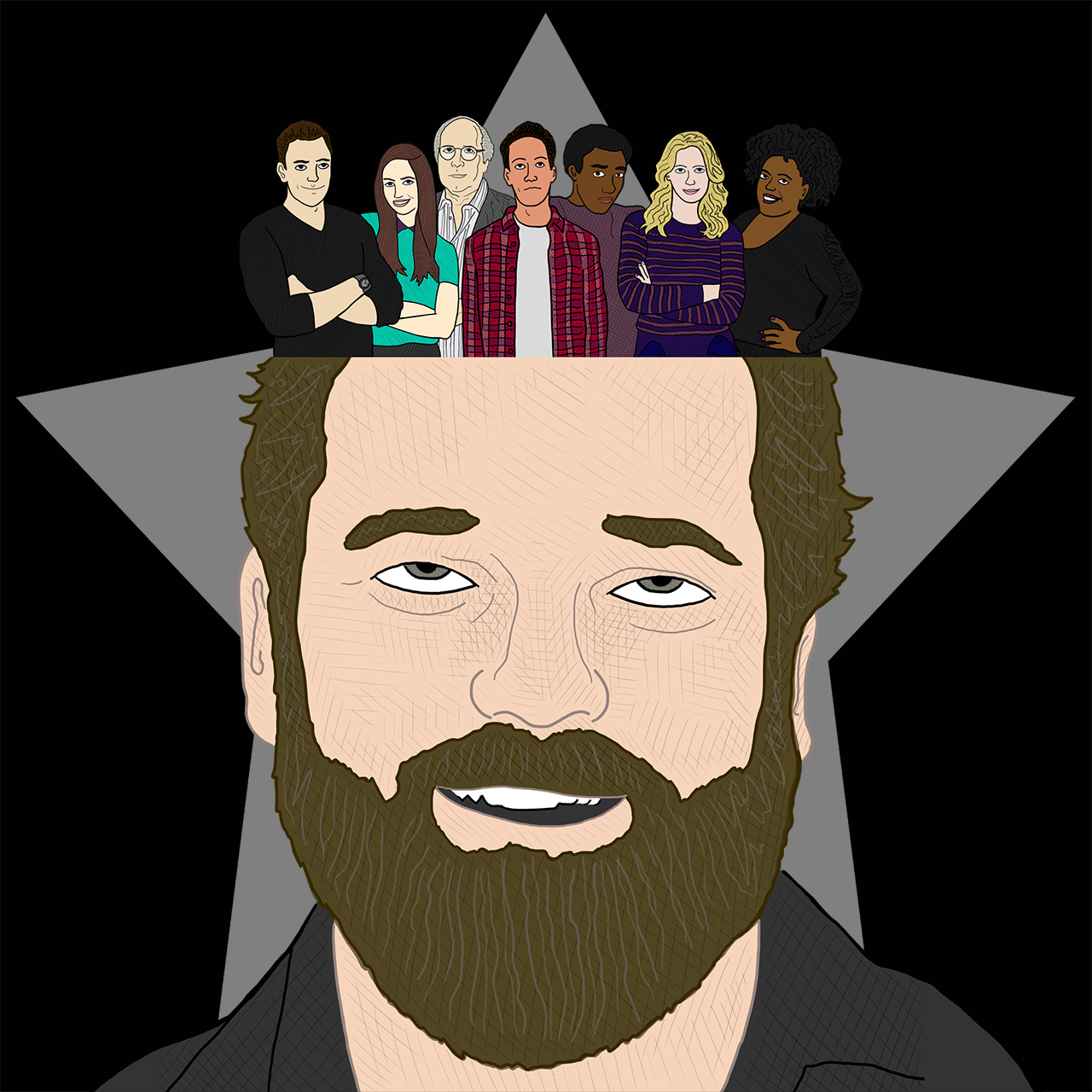 The eighth circuit is concerned with quantum consciousness, non-local awareness (information from beyond ordinary space-time awareness which is limited by the speed of light), illumination.
The eighth circuit is concerned with quantum consciousness, non-local awareness (information from beyond ordinary space-time awareness which is limited by the speed of light), illumination.
Dan Harmon is widely considered synonymous with the show he created. So much so that the defining characteristic of the show in season 4, the one season where he wasn’t involved in its production, is his obvious absence. Although there is of course a small army of actors, writers, directors, designers, dungeon masters, and production crew members that help bring Community to life, it is the general consensus that the reality of the show is the imagination of Dan Harmon. And if you follow along with his podcast and documentary Harmontown, it’s easy to imagine all these characters and ideas churning around in Harmon’s prodigious and self-aware mindscape. Harmon is the part of Community that emerges out of meta-fictionality and is part of a higher reality, our reality, the real world of everyday experience. In the 6th season, and perhaps series, finale, Harmon effortlessly opens the fourth wall, and the show becomes a sincere expression about his real life, and his real life becomes a natural extension of the show. The sitcom as transcendent mythology. Cool. Cool, cool, cool.
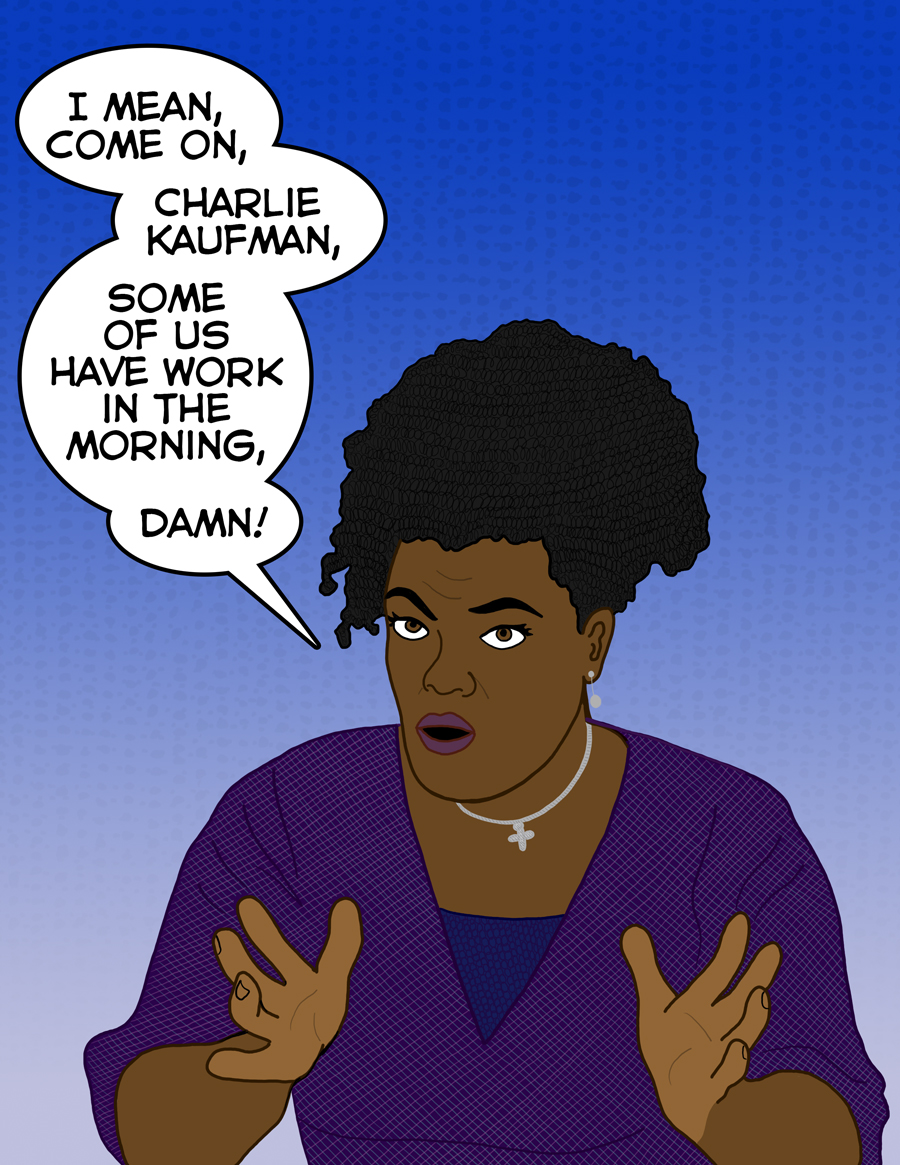
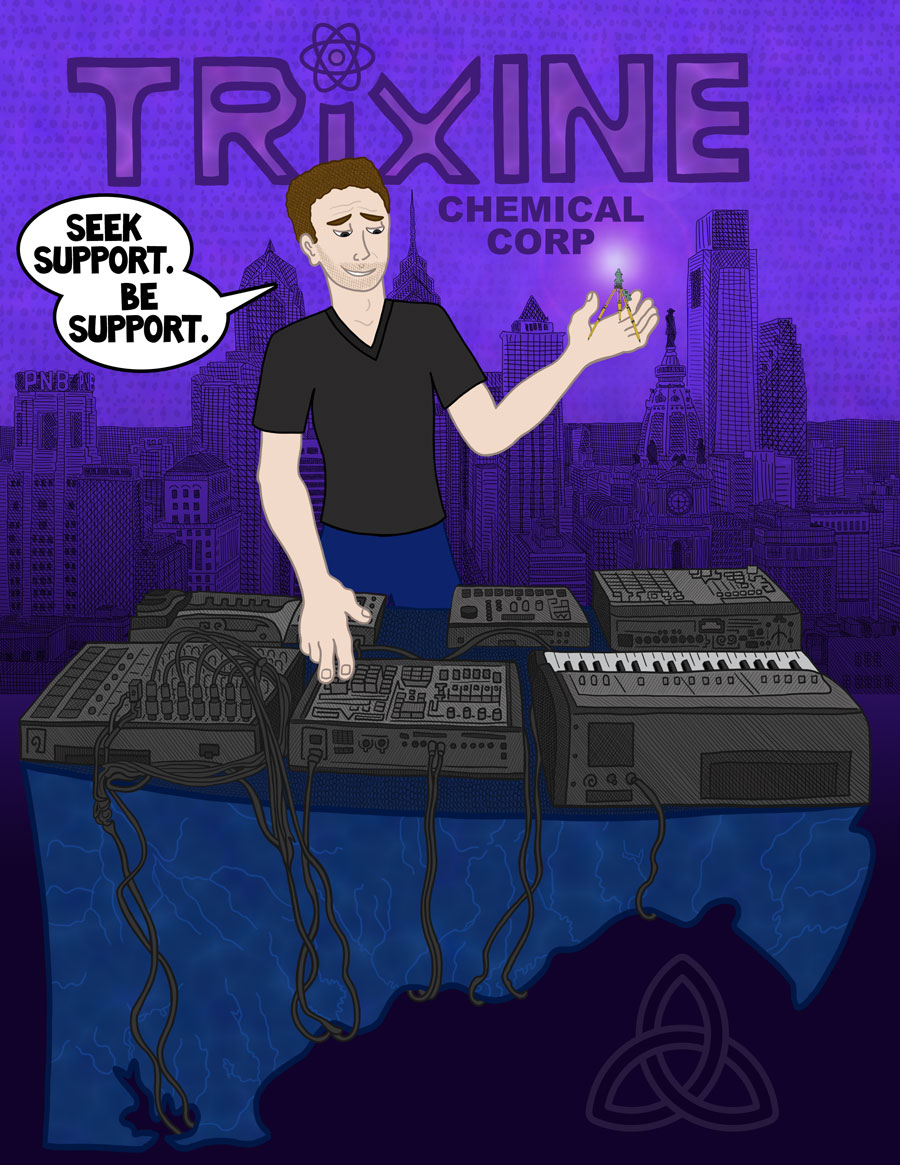
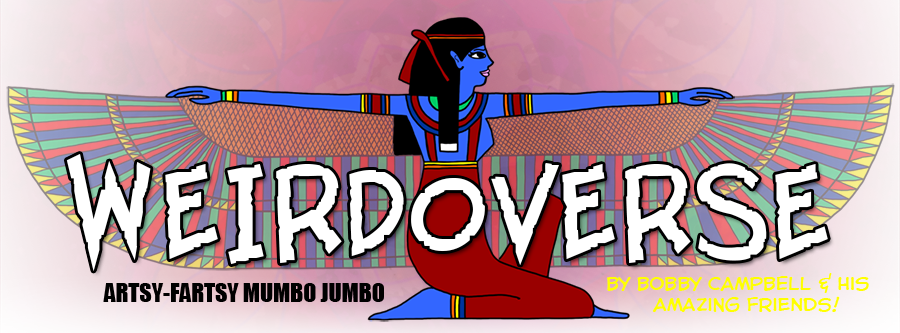
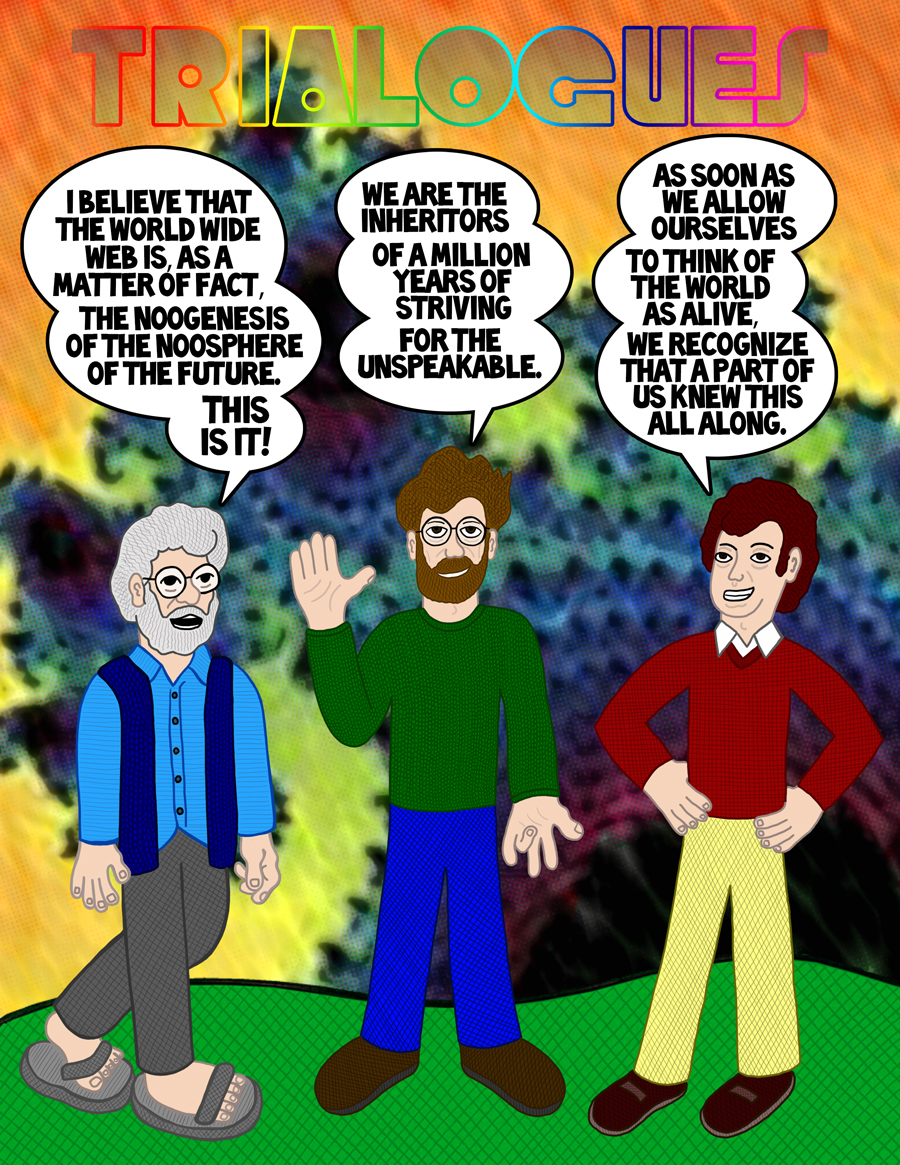
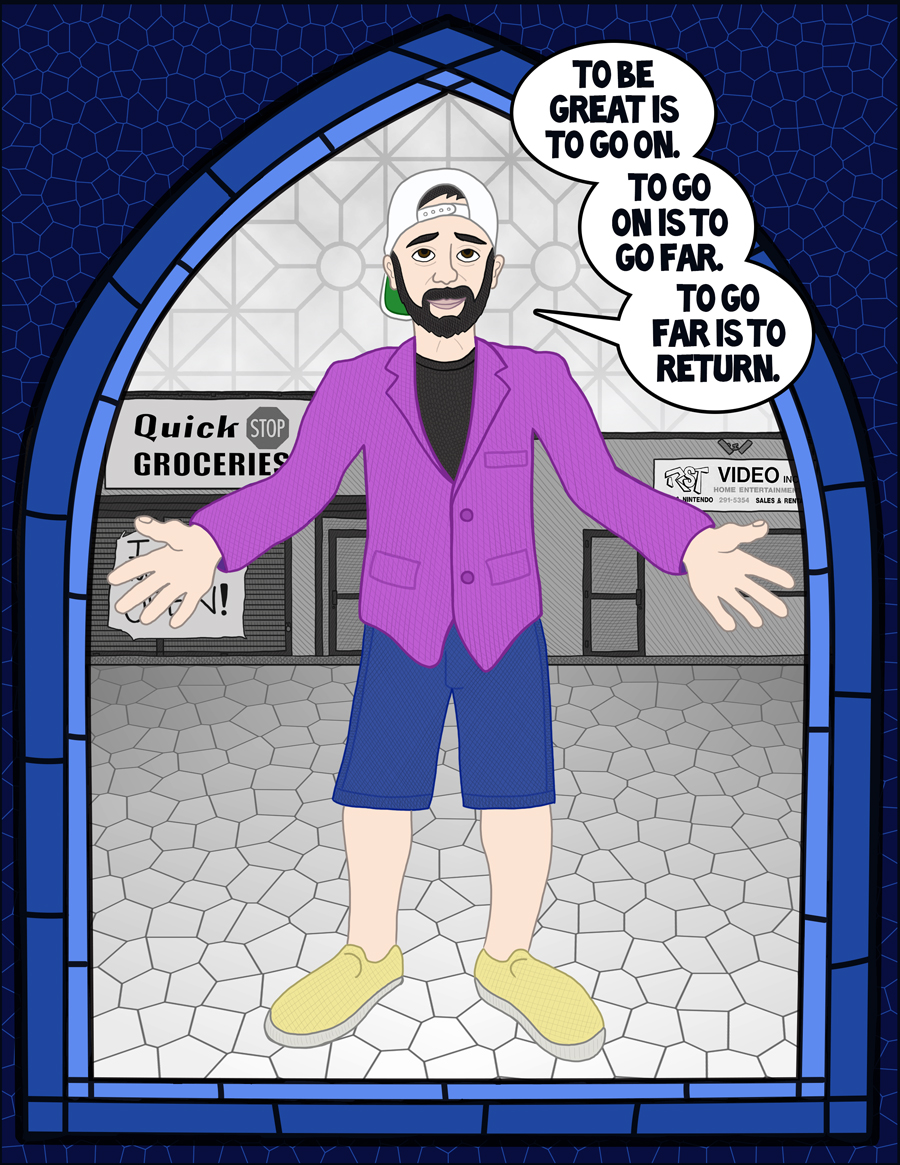
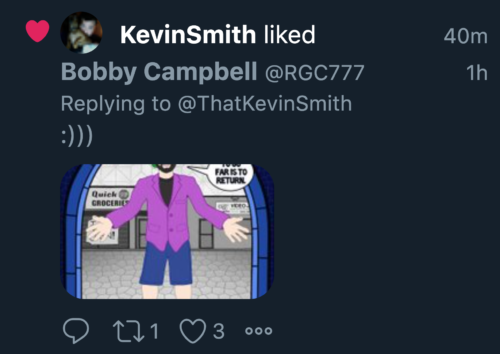
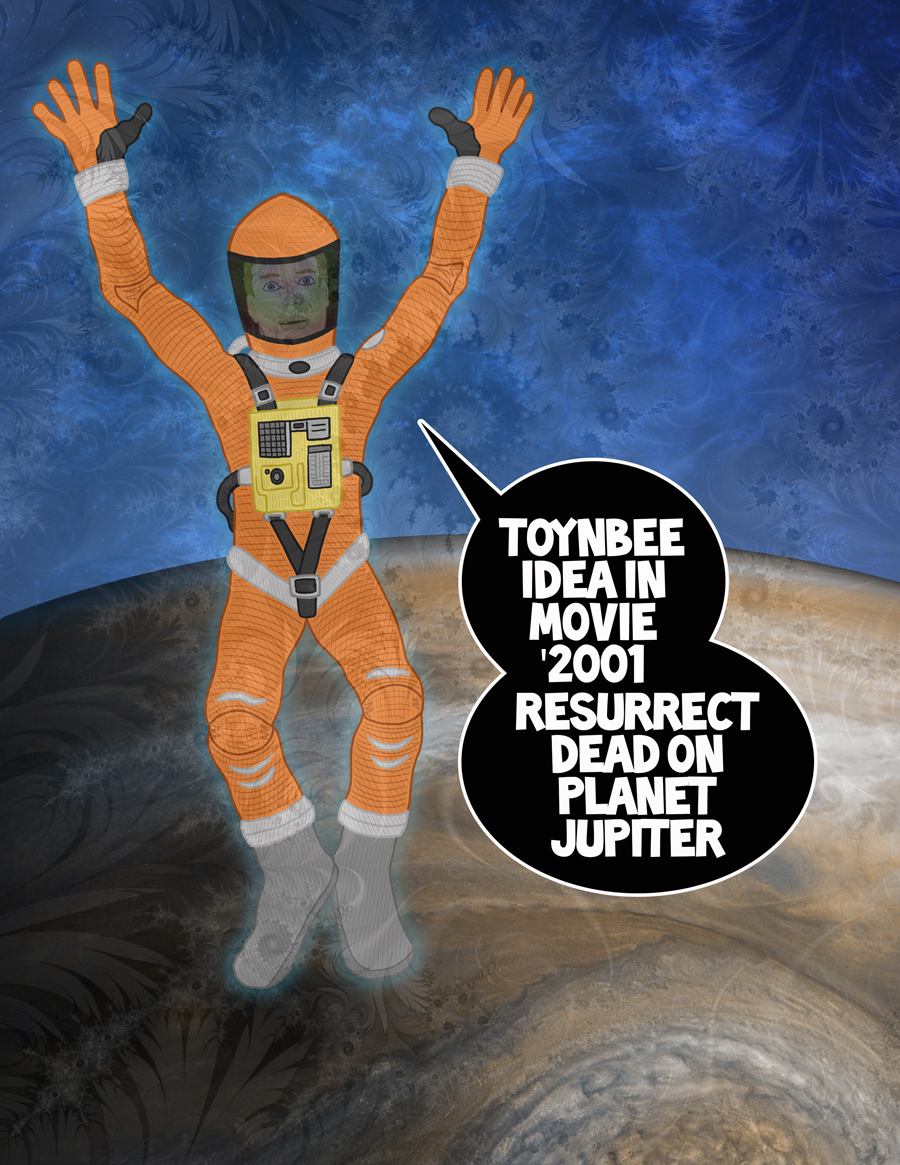
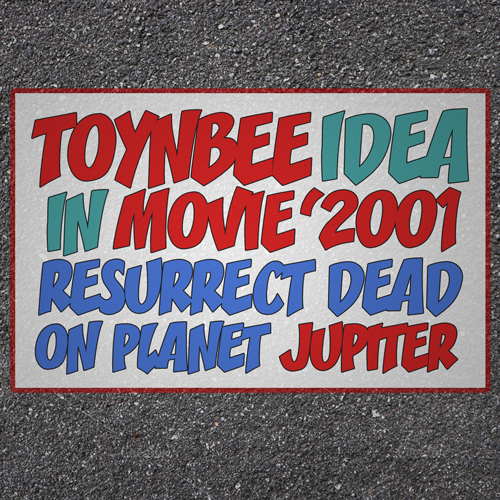
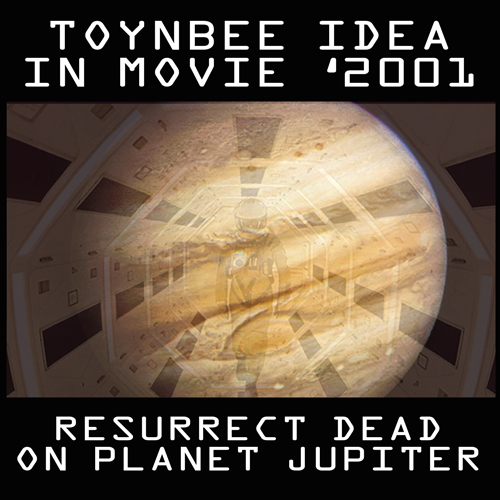 In late November 2007, upon catching a news story on the radio about the tiles, I began to poke around a bit on the internet for further information on the subject. I’d satisfied my curiosity w/ only just a few brief blurbs, when I inadvertently knocked over my copy of Joseph Campbell’s “The Hero With A Thousand Faces.” I picked up the book, and but of course, it had opened to a page wherein the word “Toynbee” shone out like some kinda clownish beacon.
In late November 2007, upon catching a news story on the radio about the tiles, I began to poke around a bit on the internet for further information on the subject. I’d satisfied my curiosity w/ only just a few brief blurbs, when I inadvertently knocked over my copy of Joseph Campbell’s “The Hero With A Thousand Faces.” I picked up the book, and but of course, it had opened to a page wherein the word “Toynbee” shone out like some kinda clownish beacon.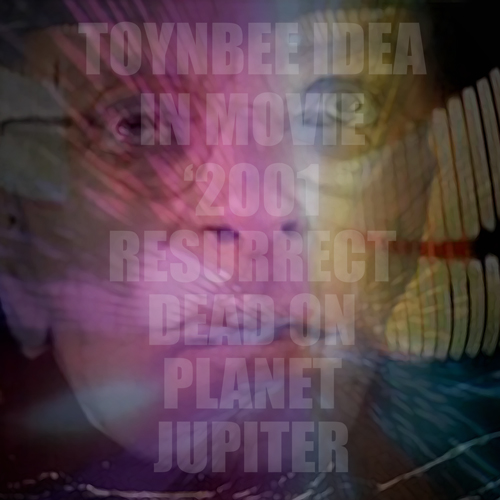 I felt obliged to dig at least a little bit deeper, and in so doing I turned up a video of a St. Louis local news segment, which features a man with a blue beard discussing Toynbee Tiles. And well, it just so happens that I know a fella w/ a blue beard…
I felt obliged to dig at least a little bit deeper, and in so doing I turned up a video of a St. Louis local news segment, which features a man with a blue beard discussing Toynbee Tiles. And well, it just so happens that I know a fella w/ a blue beard…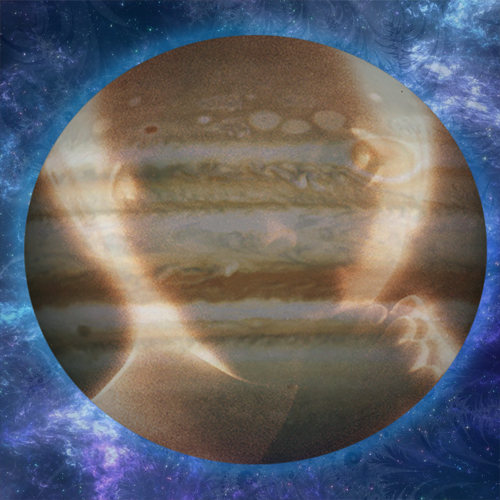 Having eagerly reported for duty an hour early, I then went to enjoy a coffee at the Penrose Diner, and while reading my well worn edition of Marshall McLuhan’s “Understanding Media”, happened upon the following passages:
Having eagerly reported for duty an hour early, I then went to enjoy a coffee at the Penrose Diner, and while reading my well worn edition of Marshall McLuhan’s “Understanding Media”, happened upon the following passages: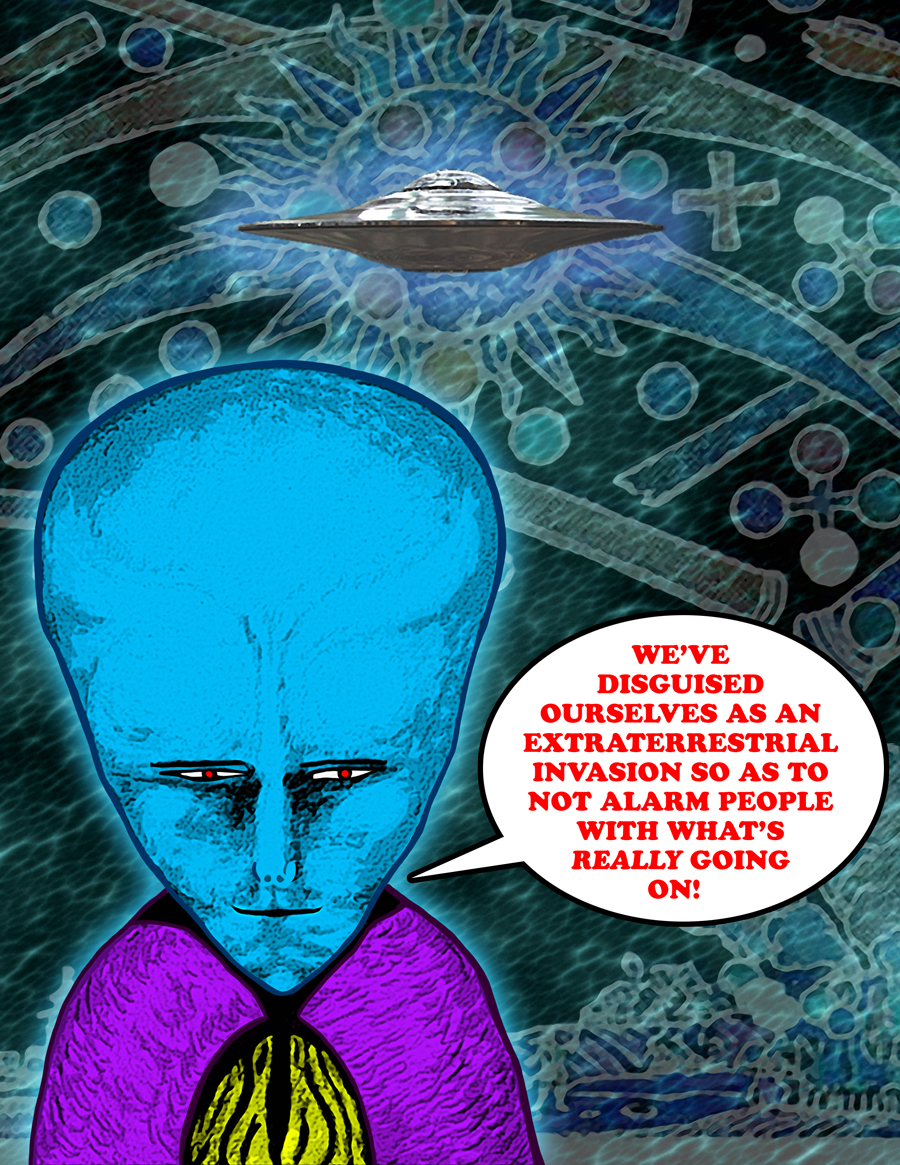
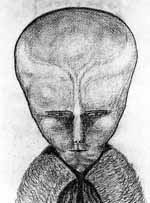

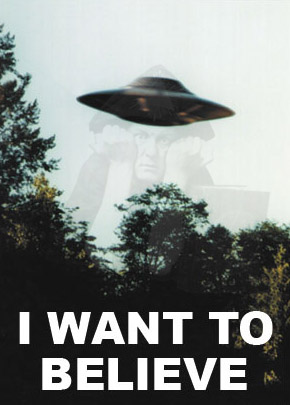
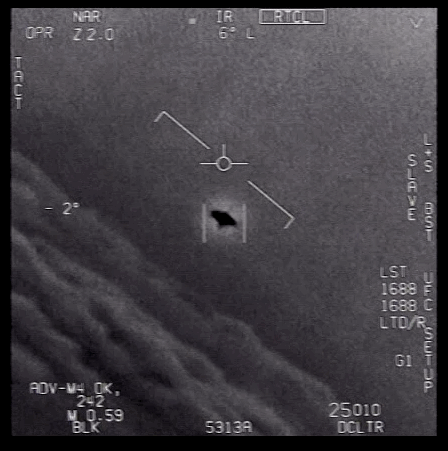 None of which is to say that UFOs aren’t real! Because of course they are, but the quantum leap in logic from unidentified flying objects to alien spacecrafts is something of a recurring curiosity. Regular as rain, someone with governmental bona fides comes out and confirms the existence of “UFOs”, which creates the pretext for a semantic hallucination, because “UFO” is a term that has become synonymous with alien spacecraft, but the presented evidence only ever shows unidentified flying objects. Amongst the confusion of this linguistic shell game highly questionable heresy creeps towards unearned legitimacy. My intent here isn’t to disprove the existence of alien spacecrafts, but rather to point out an age-old epistemological problem, as the Buddha might say, “sabda is not pramina,” testimony is not experience.
None of which is to say that UFOs aren’t real! Because of course they are, but the quantum leap in logic from unidentified flying objects to alien spacecrafts is something of a recurring curiosity. Regular as rain, someone with governmental bona fides comes out and confirms the existence of “UFOs”, which creates the pretext for a semantic hallucination, because “UFO” is a term that has become synonymous with alien spacecraft, but the presented evidence only ever shows unidentified flying objects. Amongst the confusion of this linguistic shell game highly questionable heresy creeps towards unearned legitimacy. My intent here isn’t to disprove the existence of alien spacecrafts, but rather to point out an age-old epistemological problem, as the Buddha might say, “sabda is not pramina,” testimony is not experience.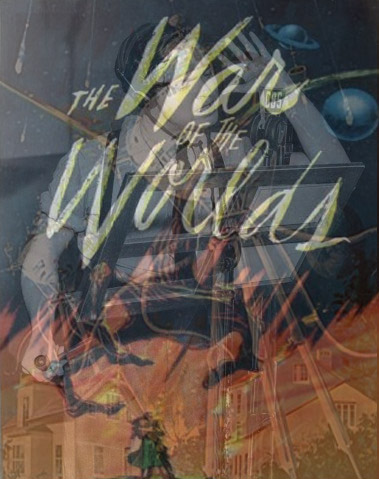
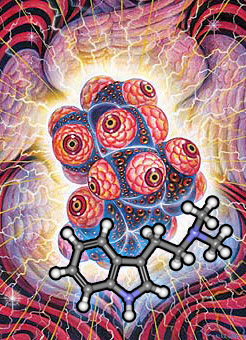
 A particularly neat thing about working with
A particularly neat thing about working with 


 This circuit is concerned with nourishment, physical safety, comfort and survival. This circuit is imprinted early in infancy. The imprint will normally last for life, unless it is re-imprinted by a powerful experience.
This circuit is concerned with nourishment, physical safety, comfort and survival. This circuit is imprinted early in infancy. The imprint will normally last for life, unless it is re-imprinted by a powerful experience. The emotional-territorial circuit is imprinted in the toddler stage. It is concerned with domination and submission, territoriality etc.
The emotional-territorial circuit is imprinted in the toddler stage. It is concerned with domination and submission, territoriality etc. This circuit is imprinted by human symbol systems. It is concerned with language, handling the environment, invention, calculation, prediction, building a mental “map” of the universe, physical dexterity, etc.
This circuit is imprinted by human symbol systems. It is concerned with language, handling the environment, invention, calculation, prediction, building a mental “map” of the universe, physical dexterity, etc. This fourth circuit is imprinted by the first orgasm-mating experiences and tribal “morals”. It is concerned with sexual pleasure (instead of sexual reproduction), local definitions of “moral” and “immoral”, reproduction, rearing of the young, etc. The fourth circuit concerns itself with cultural values and operating within social networks.
This fourth circuit is imprinted by the first orgasm-mating experiences and tribal “morals”. It is concerned with sexual pleasure (instead of sexual reproduction), local definitions of “moral” and “immoral”, reproduction, rearing of the young, etc. The fourth circuit concerns itself with cultural values and operating within social networks. This is concerned with neurological-somatic feedbacks, feeling high and blissful, somatic reprogramming, etc. It may be called the rapture circuit. When this circuit is activated, a non-conceptual feeling of well-being arises. Perceptions are judged not so much for their meaning and utility, but for their aesthetic qualities. Experience of this circuit often accompanies an hedonistic turn-on, a rapturous amusement, a detachment from the previously compulsive mechanism of the first four circuits.
This is concerned with neurological-somatic feedbacks, feeling high and blissful, somatic reprogramming, etc. It may be called the rapture circuit. When this circuit is activated, a non-conceptual feeling of well-being arises. Perceptions are judged not so much for their meaning and utility, but for their aesthetic qualities. Experience of this circuit often accompanies an hedonistic turn-on, a rapturous amusement, a detachment from the previously compulsive mechanism of the first four circuits. This circuit is concerned with re-imprinting and re-programming all earlier circuits and the relativity of “realities” perceived. This circuit consists of the nervous system becoming aware of itself.
This circuit is concerned with re-imprinting and re-programming all earlier circuits and the relativity of “realities” perceived. This circuit consists of the nervous system becoming aware of itself. This circuit is the connection of the individual’s mind to the whole sweep of evolution and life as a whole. It is the part of consciousness that echoes the experiences of the previous generations that have brought the individual’s brain-mind to its present level.
This circuit is the connection of the individual’s mind to the whole sweep of evolution and life as a whole. It is the part of consciousness that echoes the experiences of the previous generations that have brought the individual’s brain-mind to its present level. The eighth circuit is concerned with quantum consciousness, non-local awareness (information from beyond ordinary space-time awareness which is limited by the speed of light), illumination.
The eighth circuit is concerned with quantum consciousness, non-local awareness (information from beyond ordinary space-time awareness which is limited by the speed of light), illumination.
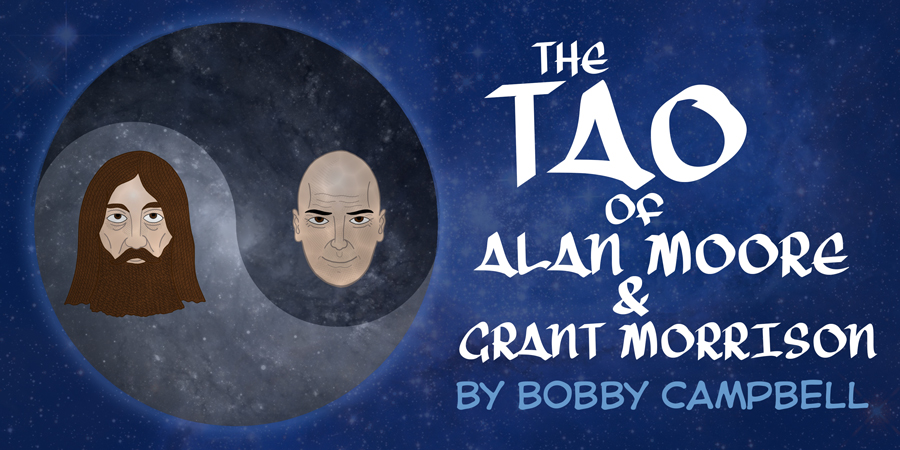 I have something of a fascination for the recurring manufactured drama between comic/occult/visionary writers Alan Moore & Grant Morrison. Often times billed as an epic magickal war, w/ thematic shades of
I have something of a fascination for the recurring manufactured drama between comic/occult/visionary writers Alan Moore & Grant Morrison. Often times billed as an epic magickal war, w/ thematic shades of 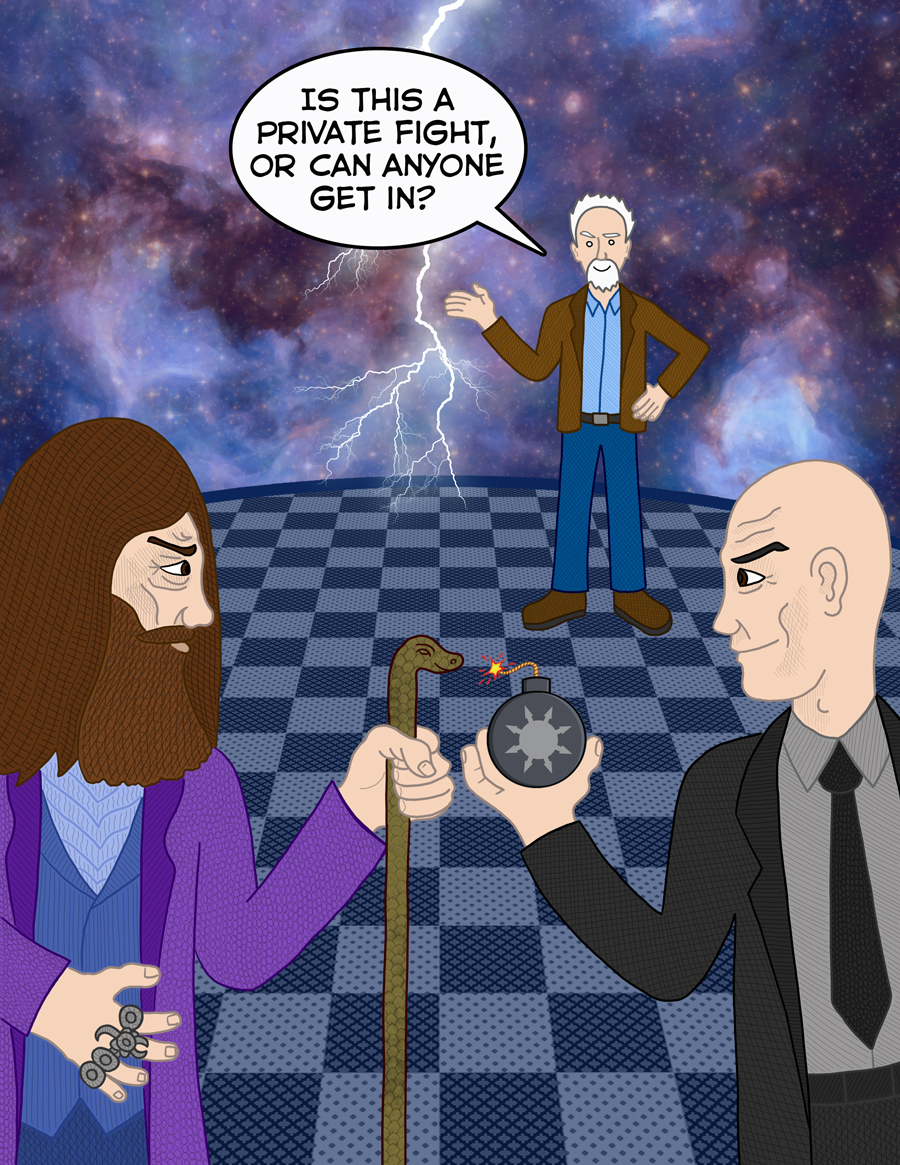
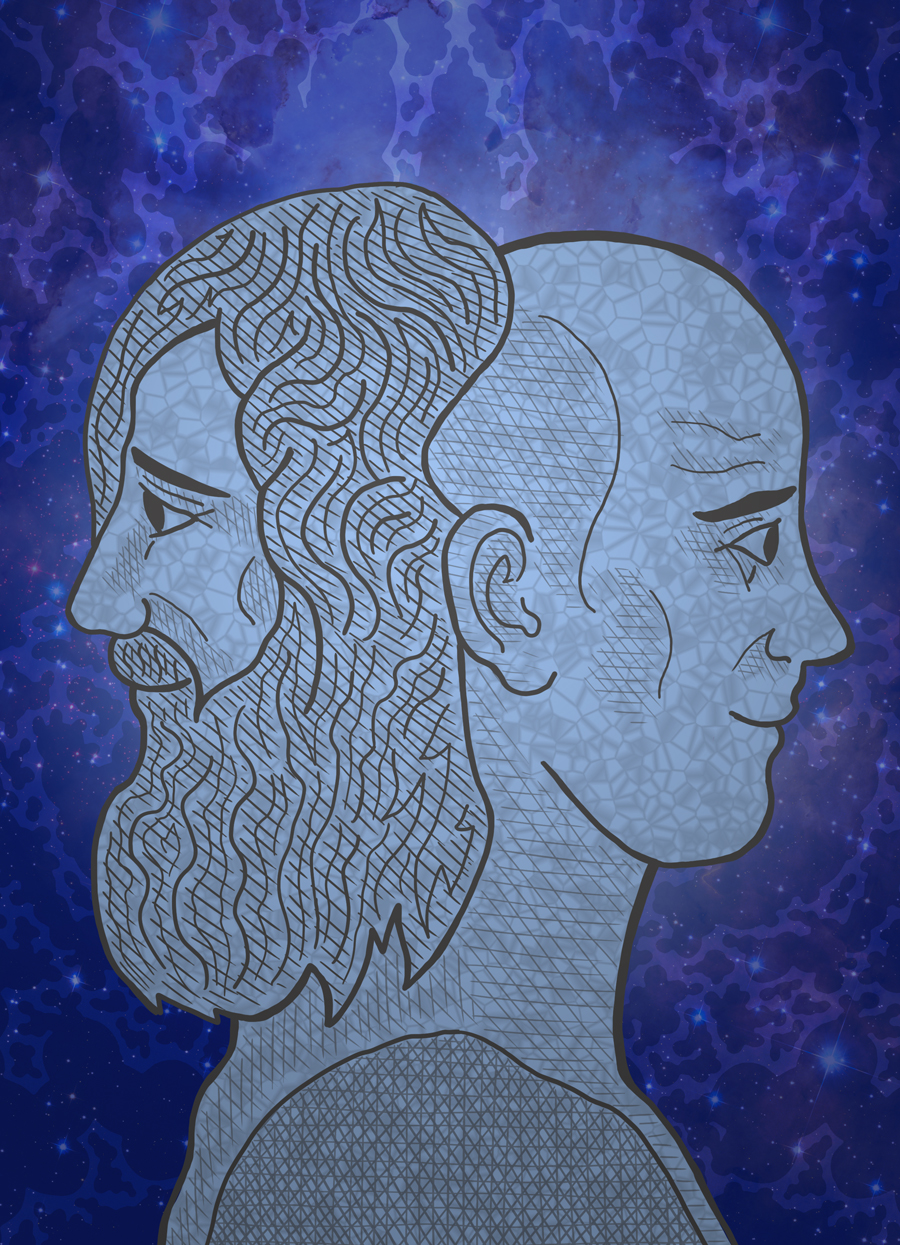
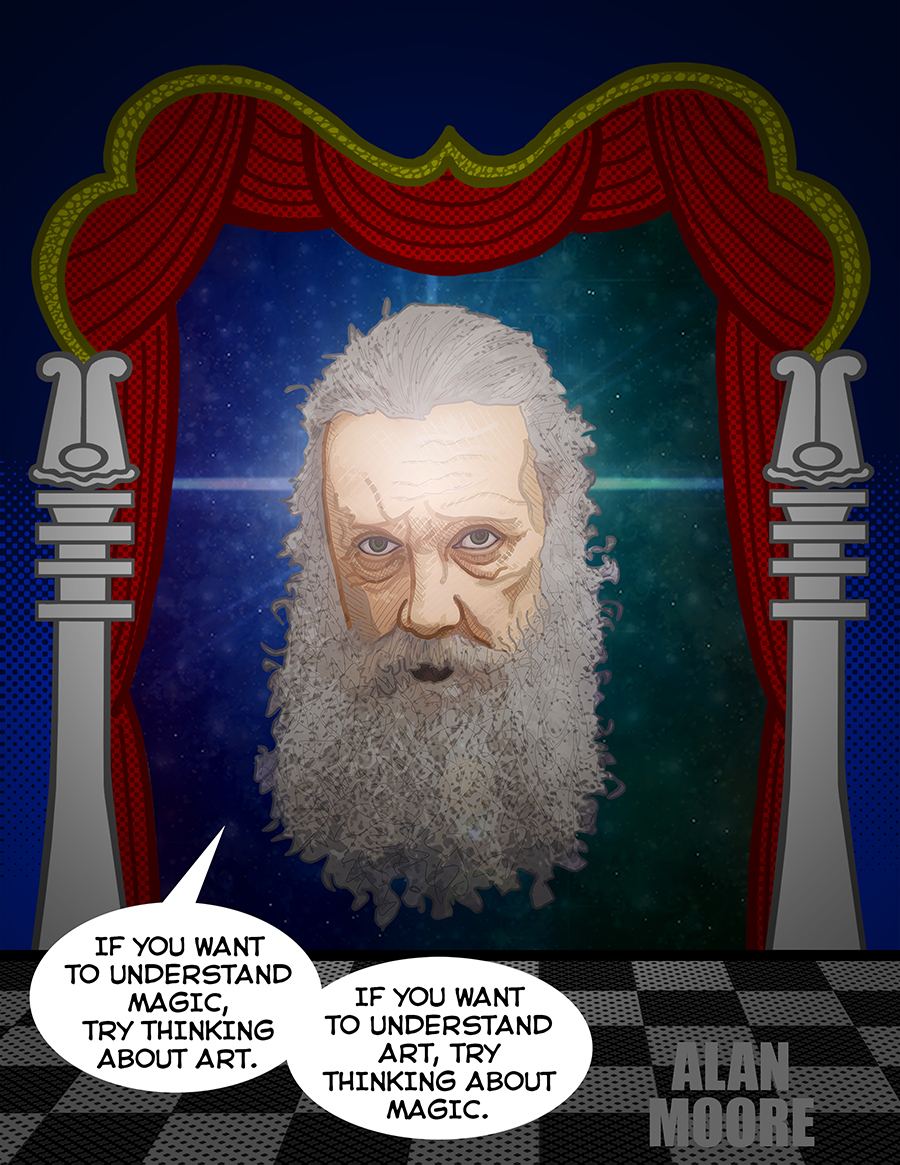 Moore seems furious at corporate media for their exploitative and manipulative business practices, rightfully so, whereas Morrison seems giddy w/ their opportunity to exploit and manipulate the global reach of corporate brands to broadcast their idiosyncratic ideas, also rightfully so.
Moore seems furious at corporate media for their exploitative and manipulative business practices, rightfully so, whereas Morrison seems giddy w/ their opportunity to exploit and manipulate the global reach of corporate brands to broadcast their idiosyncratic ideas, also rightfully so.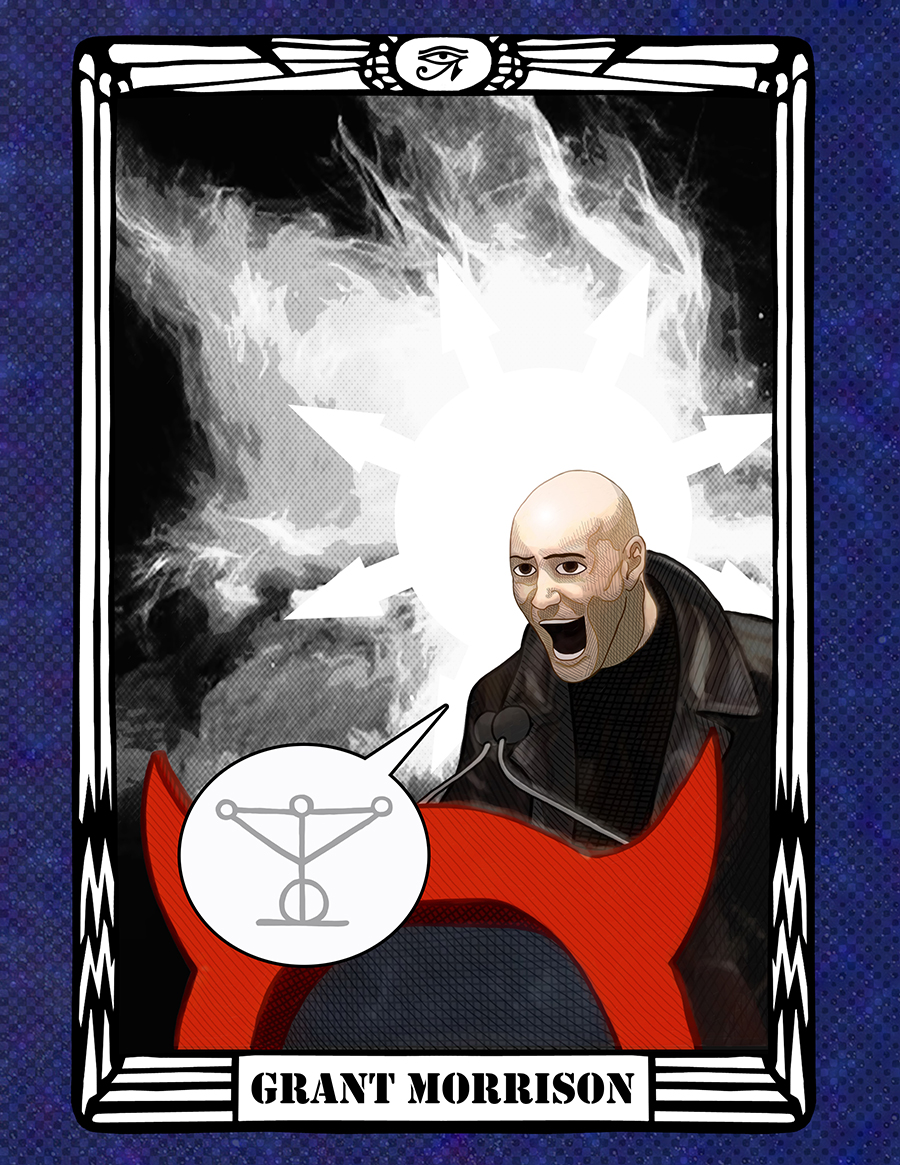 Morrison’s work is a contrary reaction to this take on superheroism, which embraces a more idealistic perspective, and attempts to bring the wondrous surreality of these fictional universes into our own. Instead of making the Superheroes more like us, Morrison wants to make us more like the Superheroes, crafting aspirational and provocative stories meant to transform the reader into self actualized super beings.
Morrison’s work is a contrary reaction to this take on superheroism, which embraces a more idealistic perspective, and attempts to bring the wondrous surreality of these fictional universes into our own. Instead of making the Superheroes more like us, Morrison wants to make us more like the Superheroes, crafting aspirational and provocative stories meant to transform the reader into self actualized super beings.
